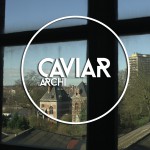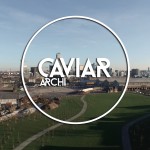In 2004 the Brussels-Capital Region decided to implement particularly ambitious energy policies in order to respond and subscribe to international climate goals.
an initiative of Brussels Invest & Export
with the support of Cécile Jodogne, State Secretary in charge of Foreign Trade
in collaboration with ecobuild.brussels
Project name : BRUSSELS BUILDS GREENER : Conception & Passive House Standard
Address : Brussels – Belgium
Names of speakers : Sebastian Moreno-Vacca (A2M / Founding Partner) – Lionel Wauters (URBANI / C.E.O.) – Sabine Leribaux (architectesassoc. / Founding Partner) – Chris Lee (JM Construction – LDPS / Manager) – Joël Solé (Bruxelles Environnement – Leefmilieu Brussel / Directeur de la division Énergie, air, climat, bâtiment durable)
Technical sheet of this architecture video clip
Journalist : Emma C. Dessouroux
Cameraman : Emanuel Pinto / Epiprod ; Didier Minne – Geoffroy Minne / Kinodoc – Julien Stroïnovsky / Novsky Films
Editing : Emma C. Dessouroux / Emanuel Pinto / Cristina Dias
Direction : Emma C. Dessouroux
Production : Les Délires Productions
Translation : MDR Translations
Substitles : Nicolas Gilson
Copyrights :
– Black Pearl / Art & Build Architect – Herpain / KOCA Time-Lapse Factory
Original transcription
La construction durable, c’est le fait de faire des projets qui contribuent à limiter au maximum l’impact sur l’environnement, que ce soit en énergie, en émission de CO2, en épuisement des ressources, gestion de l’eau, etc. Et le mieux est d’arriver à des bâtiments qui restaurent même et qui régénèrent l’environnement.
La consommation d’eau mais aussi tout l’impact de l’eau de pluie sur la parcelle de terrain sur laquelle on construit. Ça concerne aussi la biodiversité et ça va jusqu’au confort du bâtiment et de l’usage pour lequel on le conçoit. Il a d’autres aspects qui ne sont pas purement écoconstruction : on construit pour les gens qui vont y vivre. Une chose est de construire des bâtiments performants qui ont peu d’impact sur l’environnement mais encore faut-il qu’ils soient confortables. Et puis faut-il encore s’intéresser à la manière dont on vit dans ces logements. C’est une question vers laquelle on évolue maintenant et à laquelle URBANI a fait évoluer son positionnement : comment rendre des immeubles qui soient agréables à vivre ? Comment améliorer la qualité de la vie par l’habitat ? Vu que l’on développe des projets résidentiels, on a développé des concepts d’habitat où le lien de proximité entre les habitants et le quartier peut améliorer la qualité de vie des habitants.
La construction durable est quelque chose de plus vaste que l’énergie. C’est beaucoup plus vaste que d’être passif ou pas. Les BATEX ont permis de développer quelque chose qui nous tient vraiment à cœur, c’est de dire qu’une horreur architecturale et urbaine passive reste avant tout une horreur architecturale et urbaine. Ça, il faut le retenir et les BATEX ont bien poussé cette idée.
Tous ceux qui n’étaient pas là-dedans tout de suite, ont suivi entre autres parce que légalement il fallait suivre. Je pense qu’il y a un énorme courage politique là-derrière depuis 10 ans et encore aujourd’hui, en Région bruxelloise, dans le domaine de construction durable.
Sans les obligations PEB 2015, nous serions sans doute dans la bonne mouvance. Nous avons toujours devancé la législation aux années 2005 – 2010 quand nous étions loin du standard exigeant que nous connaissons aujourd’hui. Nous avons, dans nos projets, pris de l’avance. Nous avons toujours voulu être un peu ou voire beaucoup au-dessus des standards de la législation. Quelque part, nous avons été rattrapés par le législateur et même dépassés.
PEB 2015 est effectivement la traduction d’une exigence européenne où nous devons mettre en place une exigence de performance énergétique des bâtiments. C’est la demande que nous fait l’Europe. On a fait le choix à Bruxelles d’aller un peu plus loin ou un peu plus vite que ce que nous demande l’Europe puisque l’Europe, au travers de la PEB notamment, nous demande d’atteindre des bâtiments quasi zéro-énergie en 2020. A Bruxelles, nous avons décidé d’anticiper un petit peu cette obligation, d’aller plus vite et plus fort et de construire alors de la haute performance énergétique dès 2015 de façon contraignante.
C’est la première région au monde qui a imposé le standard passif. En plus à Bruxelles, nous avons le passif 2.0. qui est un passif décomplexé, qui coûte quasi le même prix ou parfois même moins cher qu’un bâtiment normal. C’est devenu une espèce d’exemple à suivre.
A Bruxelles, nous avons un nombre impressionnant de bâtiments passifs en rénovation et en neuf. La dernière fois que nous avons fait un recensement c’était fin 2014 et, là, on comptait à peu près 1 million de mètres carrés de passif. Dans ces projets-là, il y en a qui sont encore en chantier, qui sont encore en construction.
Notre agence, A2M, a fortement contribué à cette expansion puisque l’on a réalisé un quart de ce million de mètres carrés. C’est ça qui fait, aussi, que, maintenant, on exporte ça à New York puisque l’on vient d’ouvrir une agence pour tenter de reproduire ce qui s’est passé ici à Bruxelles : en très très peu d’années d’avoir une explosion de bâtiments passifs.
English subtitles
Sustainable construction is about doing projects that contribute towards minimising the impact on the environment.
Whether this is about energy, CO2 emissions, resource depletion, water management, etc.
What’s best is to end up with buildings that restore themselves, and that regenerate the environment.It’s about water consumption, but also the whole impact of rainwater on the parcel of land being constructed on.
It’s also about biodiversity, and that extends to how comfortable the building is, and to the use for which it was designed.There are other aspects which have not purely to do with eco-construction.
We build for people who are going to live in these places.
It’s one thing to construct buildings which have minimal impact on the environment, but shouldn’t they still be comfortable?
And then should we still be interested in how life is lived in this housing?
It’s a question that we’re moving towards now, and on which URBANI has revised its position:
How do we deliver buildings that are pleasant to live in?
How can the habitat improve the quality of life?
As we develop residential projects, we have been developing some habitat concepts where the proximity of the local area to the inhabitants can improve the quality of their lives.Sustainable construction is something that is so much broader than just energy.
It’s much broader than simply being about passive or not.
BATEX has facilitated the development of something that is really close to our hearts.
That is to recognise that an urban architectural horror built to passive standard is still an urban architectural horror.
That’s something we need to bear in mind, and it’s an idea that BATEX have been promoting well.All those who weren’t immediately on board soon followed, because legally this was something they had to follow.
I think that in the area of sustainable construction we have seen enormous political courage over the past ten years in the Brussels Region.Even without the PEB 2015 obligations, we would still be moving along the right lines.
We were always ahead of legislation in the years 2005 to 2010, though we were still far from the required standard that we know today.
We were ahead of the game in the projects we were doing.
We always wanted to be a little, or even a lot, ahead of legal standards.
But somewhere along the way we were caught up by the legislator, and even overtaken.PEB 2015 is in effect the translation of a European requirement, which obliges us to set up an energy performance requirement for buildings.
Europe demands that we do this.
But we decided in Brussels to go a bit further or a bit faster than what was being demanded by Europe.
Europe, particularly through the PEB, is asking us to achieve almost zero-energy buildings by 2020.
In Brussels we decided to anticipate this obligation, and move much harder and faster towards the construction of high energy performing buildings as a matter of course from 2015 on.It’s the first region in the world to impose the passive standard.
And what’s more in Brussels we have the passive standard 2.0.
This is an uninhibited standard, that costs almost the same, and sometimes less, than a normal building.
It’s set a kind of example to follow.In Brussels we have an impressive number of new and renovated passive buildings.
The last time we counted, at the end of 2014, we had a total of one million square metres of passive buildings.
Amongst these projects are some which are still building sites, still under construction.
Our agency, A2M, has made a big contribution to this expansion as we have achieved a quarter of this million square metres ourselves.
It’s now reached a stage where we are now exporting this to New York.
We’ve just opened an office there to reproduce what has been happening here in Brussels,
which in just a few years has seen an explosion of passive buildings.








Laisser un commentaire